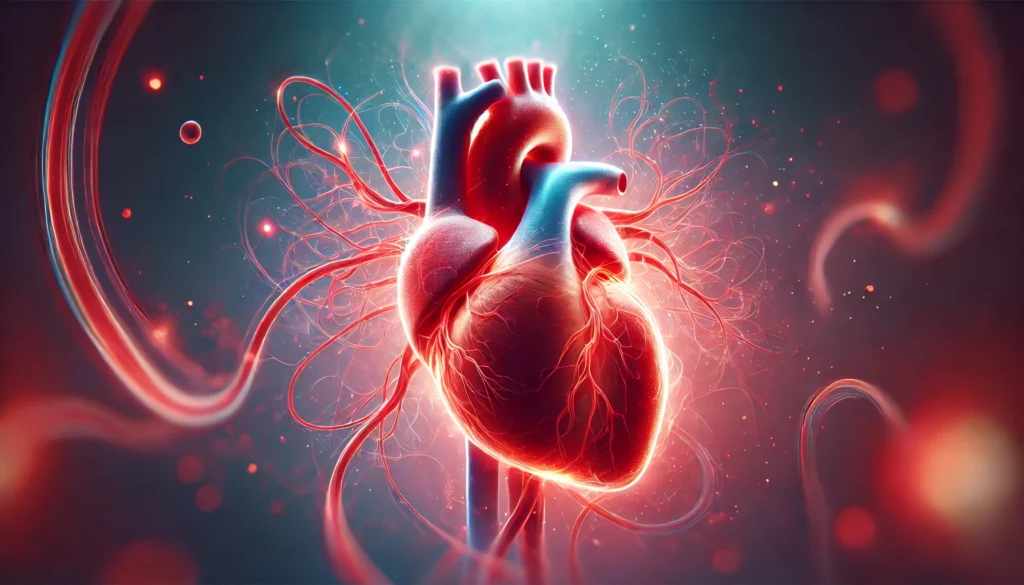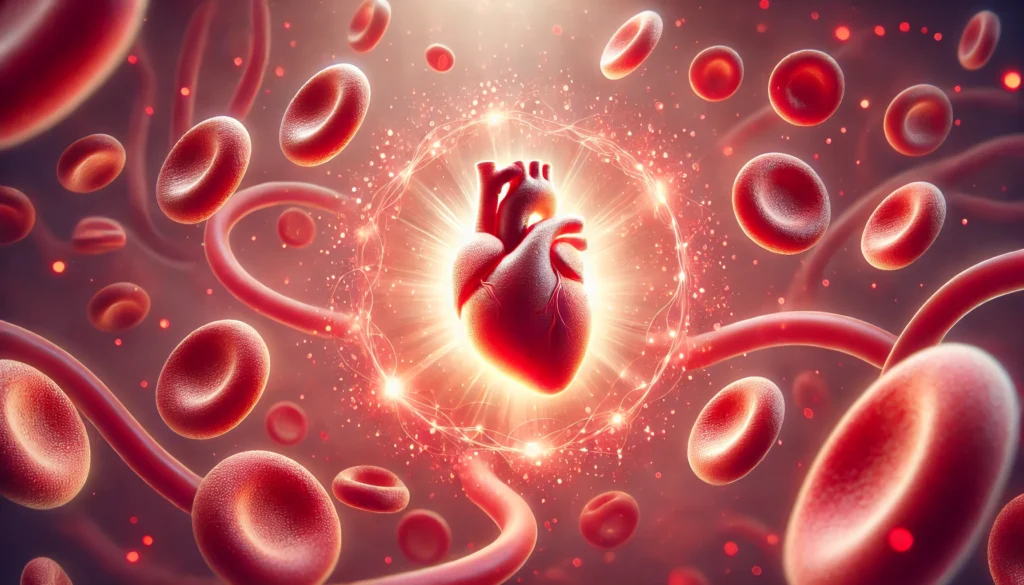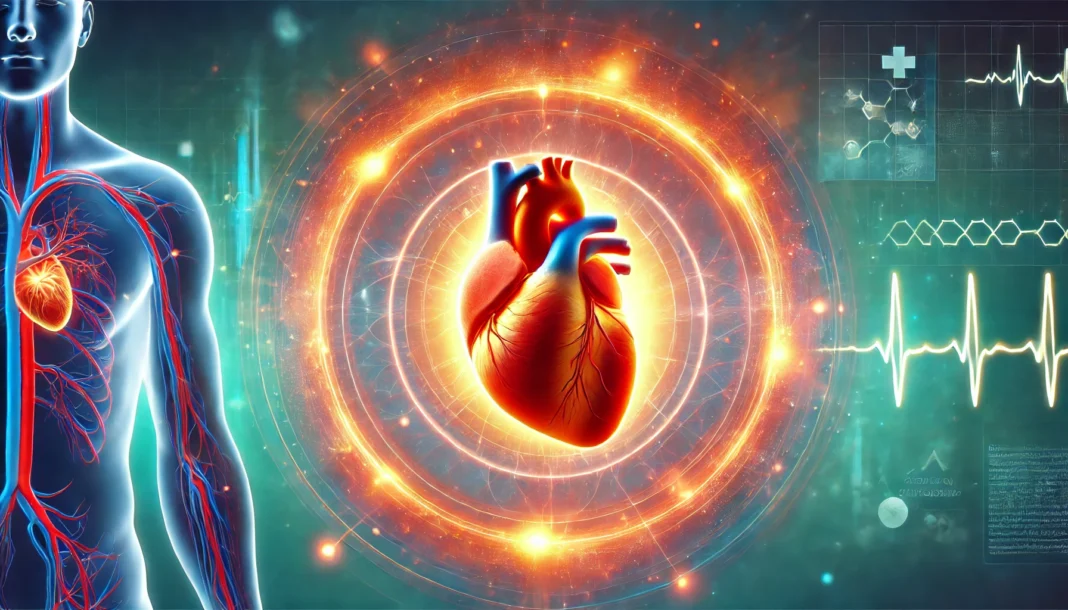Introduction
The skin serves as more than just a protective barrier—it is also a window into internal health. While many people associate heart disease with symptoms such as chest pain, shortness of breath, or fatigue, the skin can also reveal important clues about cardiovascular health. Various skin changes, ranging from unusual discoloration to persistent sores, may indicate underlying heart conditions that warrant medical attention.
The connection between skin symptoms and cardiovascular disease is rooted in the body’s complex circulatory system. When the heart struggles to pump blood effectively, circulation issues can manifest externally through the skin. Understanding these dermatological signs is crucial for early detection and timely medical intervention. This article explores skin signs that could indicate heart disease, explains their causes, and discusses when to seek medical advice. By recognizing these warning signals, individuals can take proactive steps to protect their cardiovascular health.
You May Also Like: Best Strategies for Maintaining Heart Health: Expert-Backed Tips for Cardiovascular Wellness
Skin Discoloration and Cyanosis
One of the most telling signs of an underlying heart condition is a change in skin color, particularly cyanosis—a bluish or purplish hue that occurs when blood oxygen levels are low. Cyanosis can appear on the lips, fingertips, toes, or other extremities, suggesting that the heart is not efficiently delivering oxygenated blood throughout the body. This symptom is often associated with congenital heart defects, heart failure, or advanced cardiovascular disease.
Cyanosis occurs when deoxygenated blood accumulates in the circulatory system due to impaired heart function. Conditions such as congenital heart defects, severe valve disease, or cardiomyopathies can reduce the heart’s ability to pump oxygenated blood efficiently. Additionally, peripheral artery disease (PAD) can cause cyanosis in the legs and feet, often accompanied by pain or numbness.
Patients experiencing persistent cyanosis should seek immediate medical evaluation. Pulse oximetry tests and arterial blood gas analysis can help determine oxygen saturation levels, guiding appropriate treatment strategies. Addressing the underlying cardiovascular issue, whether through medication, lifestyle changes, or surgical intervention, is essential for improving circulation and overall health.
Unexplained Rashes and Inflammatory Skin Conditions
Skin rashes can emerge as unexpected indicators of cardiovascular disease. Conditions such as endocarditis—an infection of the heart’s inner lining—can cause reddish or purplish spots on the skin, known as Janeway lesions and Osler’s nodes. These rashes typically appear on the hands, feet, or fingertips and may be accompanied by fever and fatigue.
Inflammatory skin conditions, such as psoriasis, have also been linked to heart disease. Research indicates that individuals with psoriasis—a chronic autoimmune skin disorder—are at a higher risk of developing cardiovascular disease due to systemic inflammation. Studies suggest that the inflammatory pathways involved in psoriasis contribute to atherosclerosis, increasing the likelihood of heart attacks and strokes.
Recognizing inflammatory skin changes as potential warning signs is vital. Patients with persistent or unexplained rashes should undergo a thorough cardiovascular assessment to identify any underlying conditions. Dermatological treatments, alongside cardiovascular risk management, can help mitigate long-term health complications.

Persistent Itching and Skin Irritation
A lesser-known yet significant skin-related symptom of heart disease is persistent itching or pruritus. While itching is commonly associated with dermatological conditions such as eczema or allergies, it can also signal underlying cardiovascular issues. One specific heart condition that causes the skin to burn and peel is erythromelalgia, a rare vascular disorder characterized by episodes of redness, warmth, and severe burning pain in the extremities.
Persistent itching can also be a symptom of cholestatic liver disease, which may be indirectly linked to heart failure through fluid retention and impaired circulation. In some cases, heart failure can lead to kidney dysfunction, which in turn causes uremic pruritus—a form of itching related to toxin buildup in the bloodstream.
Patients experiencing chronic, unexplained itching should consider cardiovascular screening, particularly if other risk factors for heart disease are present. Addressing circulatory health and managing underlying conditions can help alleviate skin discomfort and improve overall well-being.
Skin Ulcers and Slow-Healing Wounds
Poor circulation due to heart disease can impair the body’s ability to heal wounds efficiently. Skin ulcers, particularly those on the legs and feet, may develop due to reduced blood flow caused by peripheral artery disease (PAD) or congestive heart failure. These ulcers are often painful, slow to heal, and prone to infection.
Venous insufficiency, another circulatory disorder linked to heart disease, can contribute to the formation of venous stasis ulcers. These ulcers typically develop around the ankles and are characterized by darkened, thickened skin surrounding the wound. Without proper treatment, venous ulcers can become chronic and lead to severe complications, including cellulitis or tissue necrosis.
Patients with persistent ulcers should undergo vascular assessments to determine the extent of circulatory impairment. Lifestyle modifications, compression therapy, and medical interventions such as angioplasty or bypass surgery may be necessary to restore proper blood flow and facilitate healing.
Clubbing of the Fingers and Toes
Clubbing of the fingers and toes—characterized by the enlargement of the fingertips and a change in nail curvature—can be a subtle yet significant indicator of chronic heart disease. This condition is often associated with long-term oxygen deprivation resulting from congenital heart defects, infective endocarditis, or pulmonary hypertension.
The development of clubbing occurs gradually, making it a symptom that is frequently overlooked until the underlying heart condition progresses. Physicians assess clubbing through physical examination and confirmatory tests such as echocardiograms and blood oxygen level measurements.
Early detection of clubbing can prompt timely medical intervention, reducing the risk of severe cardiovascular complications. Addressing the underlying cause through appropriate treatment can prevent further deterioration of heart and lung function.

Frequently Asked Questions (FAQ): Skin Signs That Could Indicate Heart Disease
1. What are the most common skin signs that could indicate heart disease?
Skin changes linked to heart disease often involve alterations in color, texture, and healing ability. Cyanosis, a bluish tint on the lips, fingertips, or toes, signals poor oxygen circulation due to cardiovascular inefficiency. Another common symptom includes reddish or purplish spots that appear as Janeway lesions or Osler’s nodes, typically associated with infective endocarditis. Persistent rashes and inflammatory skin conditions, such as psoriasis, have also been linked to a higher risk of cardiovascular disease. Recognizing these skin changes and consulting a healthcare professional can aid in the early detection and management of heart-related conditions.
2. How does poor circulation affect the skin?
When the heart struggles to pump blood efficiently, circulation issues can manifest on the skin in several ways. Cold, pale, or bluish skin in the extremities indicates inadequate blood flow and oxygenation, which may be a symptom of heart failure or peripheral artery disease. Poor circulation can also contribute to slow wound healing, increasing the risk of chronic ulcers, particularly on the legs and feet. Over time, insufficient blood supply can cause skin atrophy, making it thin, shiny, or more prone to infections. Early diagnosis and improved cardiovascular health can help mitigate these effects and promote better skin integrity.
3. Can a heart attack cause itching or other unusual skin sensations?
A heart attack does not directly cause itching, but some related conditions may contribute to this symptom. Pruritus, or persistent itching, can be associated with fluid retention and poor circulation, both of which are common in heart failure. Additionally, conditions like erythromelalgia—a heart condition that causes the skin to burn and peel—can produce sensations of itching, warmth, or pain in the hands and feet. In some cases, heart attack-related nerve damage can lead to paresthesia, an abnormal tingling or itching sensation. If unexplained itching is accompanied by chest discomfort, shortness of breath, or fatigue, immediate medical evaluation is necessary.
4. What does peeling or burning skin indicate about heart health?
Peeling or burning skin can be associated with several cardiovascular conditions, particularly those affecting blood circulation and inflammation. A heart condition that causes the skin to burn and peel, such as erythromelalgia, results in redness, warmth, and pain, often worsening with heat exposure. Other potential causes include peripheral artery disease and vasculitis, which can lead to skin damage due to inadequate blood supply or excessive immune response. If accompanied by swelling, ulceration, or discoloration, these symptoms warrant medical attention to rule out serious cardiovascular complications.
5. How are inflammatory skin diseases like psoriasis connected to heart disease?
Psoriasis is an inflammatory skin condition that has been strongly associated with an increased risk of cardiovascular disease. The chronic inflammation present in psoriasis contributes to atherosclerosis, the buildup of plaques in the arteries that can lead to heart attacks and strokes. Studies show that individuals with severe psoriasis are at a higher risk of developing heart disease compared to those without the condition. Managing inflammation through lifestyle changes, medications, and regular cardiovascular check-ups can help reduce this risk. Awareness of this link allows for better prevention and early intervention strategies.
6. What role do the hands play in detecting heart disease symptoms?
The hands can provide important clues about cardiovascular health through changes in color, texture, and temperature. Cold, discolored fingers may indicate poor circulation or underlying heart disease hands symptoms, such as Raynaud’s phenomenon or cyanosis. Clubbing of the fingers, characterized by thickened fingertips and curved nails, is often a sign of long-term oxygen deprivation due to congenital heart defects or pulmonary hypertension. Additionally, swollen hands can result from fluid retention linked to heart failure. Monitoring these signs and consulting a doctor for further cardiovascular evaluation is essential.
7. Can heart disease cause unexplained skin rashes?
Certain types of heart disease are associated with specific skin rashes that can serve as early warning signs. Infective endocarditis, a bacterial infection of the heart’s inner lining, often leads to Janeway lesions—painless red spots on the palms and soles—and Osler’s nodes, tender lumps on the fingers or toes. Additionally, cholesterol embolization syndrome, a condition where cholesterol particles block small blood vessels, can cause a mottled, lacy rash known as livedo reticularis. If an unexplained rash appears alongside fatigue, fever, or other cardiovascular symptoms, a medical evaluation is necessary to determine the underlying cause.
8. Why do some people with heart disease experience slow-healing wounds?
Heart disease can lead to slow-healing wounds due to poor circulation and reduced oxygen supply to tissues. Peripheral artery disease (PAD) restricts blood flow to the legs and feet, making it difficult for the body to repair damaged skin. Chronic venous insufficiency, another cardiovascular condition, can cause venous ulcers that persist for months without proper treatment. These wounds are often accompanied by swelling, skin discoloration, and increased infection risk. Addressing circulatory issues through lifestyle modifications, medications, or surgical interventions can improve wound healing and overall cardiovascular function.
9. Are there specific heart conditions linked to temperature changes in the skin?
Yes, temperature changes in the skin can indicate underlying heart conditions that affect circulation and vascular function. Certain heart-related conditions, including Raynaud’s phenomenon, can cause symptoms in the hands, such as fingers turning white or blue in response to cold temperatures due to blood vessel spasms. Erythromelalgia, a heart condition that causes the skin to burn and peel, results in excessive warmth and redness in the hands and feet, often triggered by heat exposure. Chronic heart failure may also lead to clammy or cold skin as the body struggles to maintain adequate circulation. Identifying these changes early can help guide proper cardiovascular care.
10. When should someone seek medical attention for skin-related heart symptoms?
Individuals should seek medical attention if they experience persistent skin symptoms that could indicate cardiovascular disease, especially if they are accompanied by other heart-related warning signs. Symptoms such as unexplained cyanosis, chronic rashes, peeling or burning skin, and heart disease hands signs like swelling or clubbing warrant a thorough cardiovascular evaluation. If skin changes are accompanied by chest pain, shortness of breath, or dizziness, emergency medical attention is necessary. Regular check-ups and early intervention can help prevent serious heart complications and promote long-term cardiovascular health.

Conclusion
The skin provides valuable insights into cardiovascular health, often revealing signs of heart disease before other symptoms emerge. From cyanosis and inflammatory rashes to slow-healing wounds and persistent itching, these dermatological manifestations serve as crucial warning signals. Recognizing these signs and seeking prompt medical evaluation can lead to early diagnosis and effective management of heart conditions.
While some skin changes may stem from benign causes, their persistence or association with other symptoms warrants a thorough cardiovascular assessment. Maintaining overall heart health through lifestyle modifications, regular screenings, and medical management can significantly reduce the risk of severe complications. By understanding the intricate relationship between the skin and the cardiovascular system, individuals can take proactive steps toward better heart health and overall well-being.
skin symptoms of cardiovascular disease, circulatory issues and skin changes, heart disease warning signs on skin, dermatological signs of heart conditions, poor circulation and skin health, blue skin and heart problems, chronic inflammation and heart disease, skin rashes linked to heart issues, slow healing wounds and cardiovascular disease, clubbing of fingers and heart health, vascular disorders affecting skin, heart disease-related skin ulcers, signs of poor blood flow in skin, connection between psoriasis and heart disease, cyanosis and heart failure, skin temperature changes and circulation, peripheral artery disease and skin symptoms, early skin indicators of heart disease, how heart disease affects the skin, cardiovascular health and skin appearance
Further Reading:
Dermatological manifestations of cardiac conditions
10 Skin Warning Signs That May Indicate Heart Disease
Heart Disease Warning Signs: What Your Skin May Be Telling You


